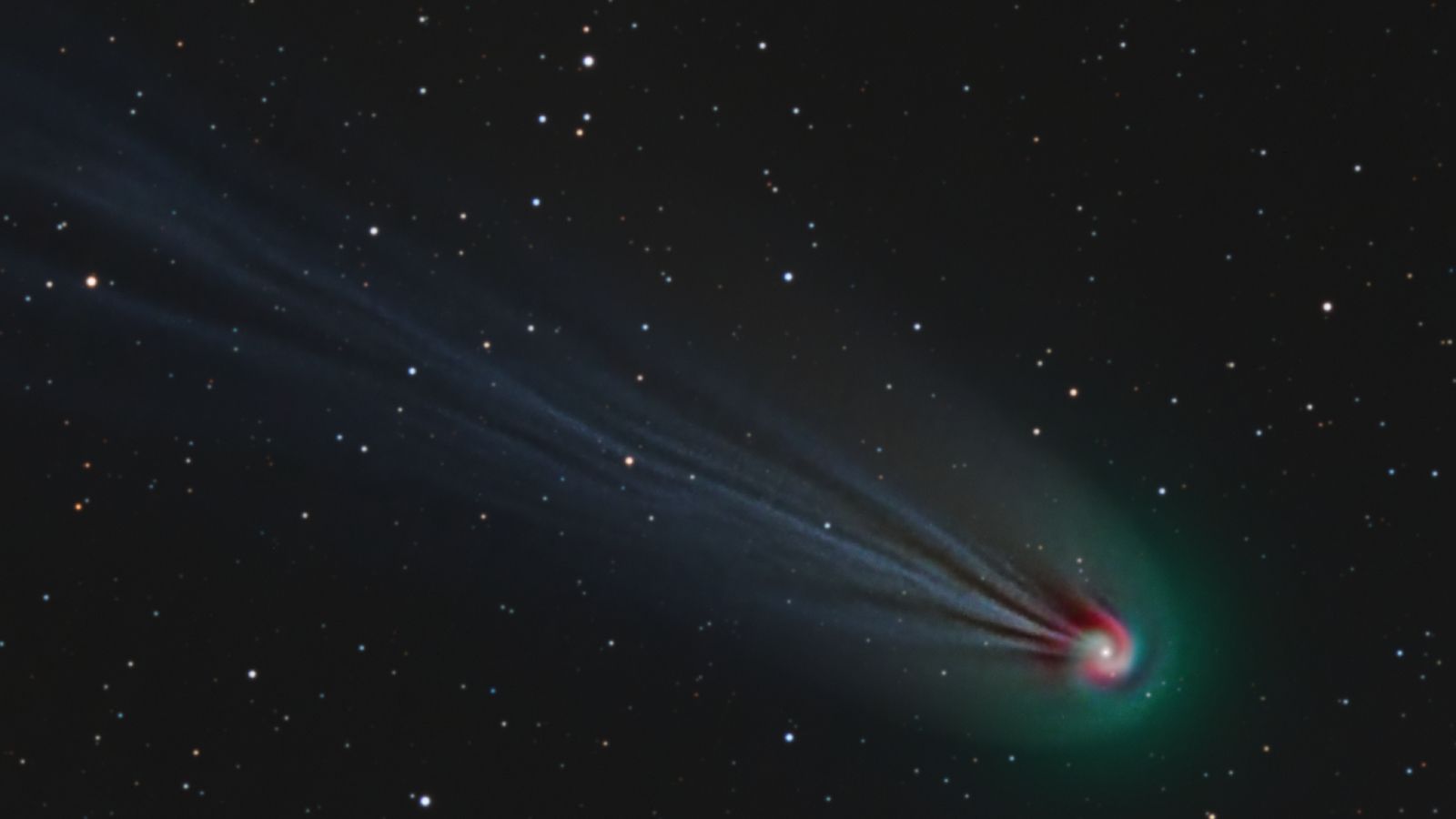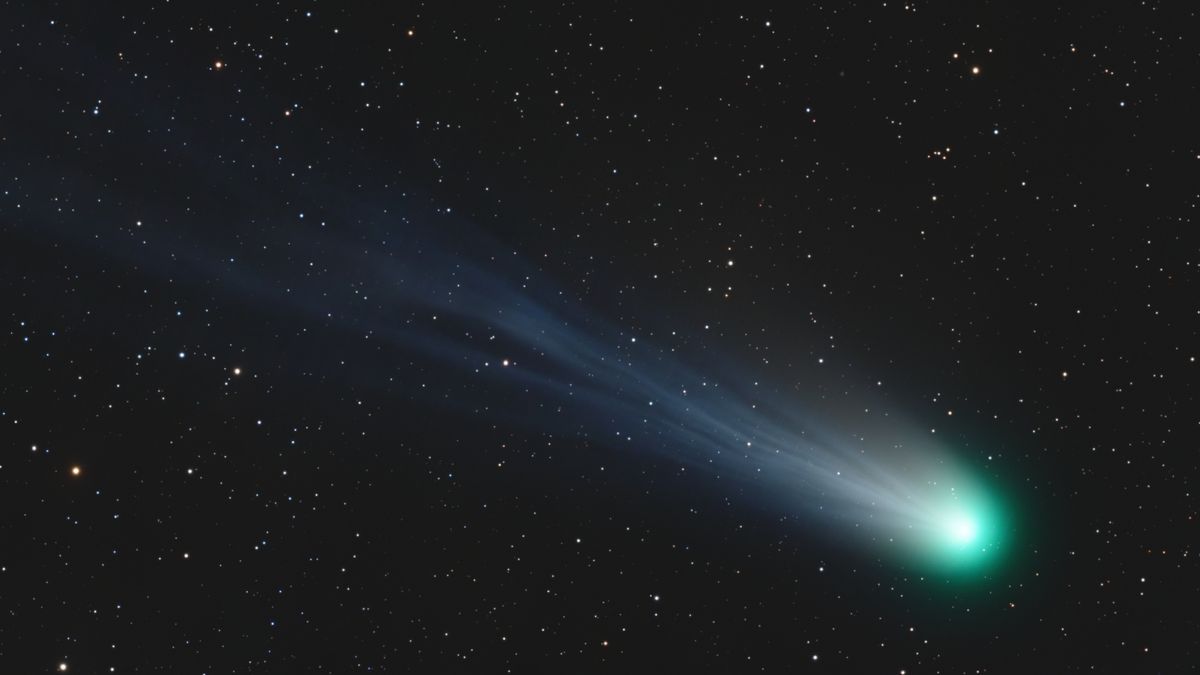Follow us on Google News (click on ☆)
This comet, with a span of about 10.6 miles (17 kilometers), orbits the Sun along a highly elliptical trajectory every 71 years. Its frozen core, surrounded by a shell of ice, is enveloped by a coma: a gradually dissipating cloud of dusty ice. What sets 12P apart is its cryovolcanic activity. Under the influence of solar radiation, cracks form, releasing jets of icy material. This gives it an exceptional brightness during these eruptions.

A hitherto unknown spiral of light was observed in the coma of comet 12P/Pons-Brooks in new images.
Credit: Jan Erik Vallestad
Last year, 12P made headlines when it experienced a massive eruption, the first in 69 years, giving it "demonic horns". These, however, disappeared during more recent eruptions. As it approaches the Sun, its green coma due to a high concentration of dicarbon (diatomic carbon) has become much more visible, as has its dusty tail swept by the solar wind.
A hidden light spiral surrounding the comet's ice core has been brought to light. This discovery is the result of the work of astrophotographer Jan Erik Vallestad, who, from Norway, used specialized software to reveal this spiral structure in the coma. This spiral is thought to be the result of small geysers on the comet's surface, ejecting jets of cryomagma which, due to the comet's rotation, take on a swirling shape.

Without image processing, the spiral of comet 12P/Pons-Brooks is not visible.
Credit: Jan Erik Vallestad
Currently, 12P is traversing the inner solar system at a speed of about 40,075 mph (approximately 64,500 km/h). It will reach its closest point to the Sun on April 24, before passing near Earth in early June, when it is expected to be visible to the naked eye.
Photographs of 12P have been taken by astrophotographers over the past few months, capturing, among other things, its passage near the Crescent Nebula. Some even hope that it will be visible during the total solar eclipse on April 8 on the North American continent, although a major cryomagma eruption would be necessary to ensure its visibility.